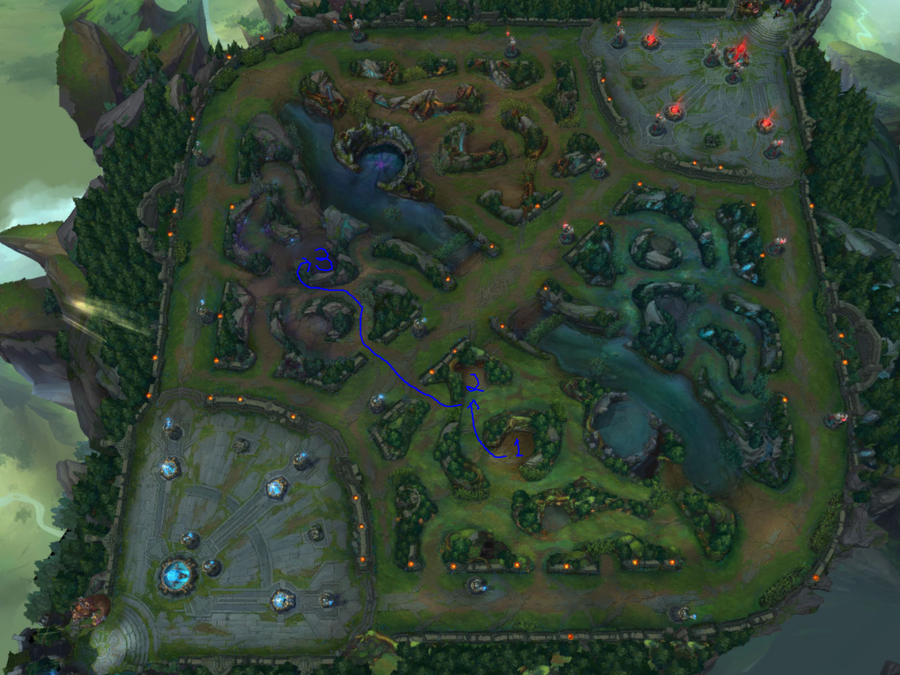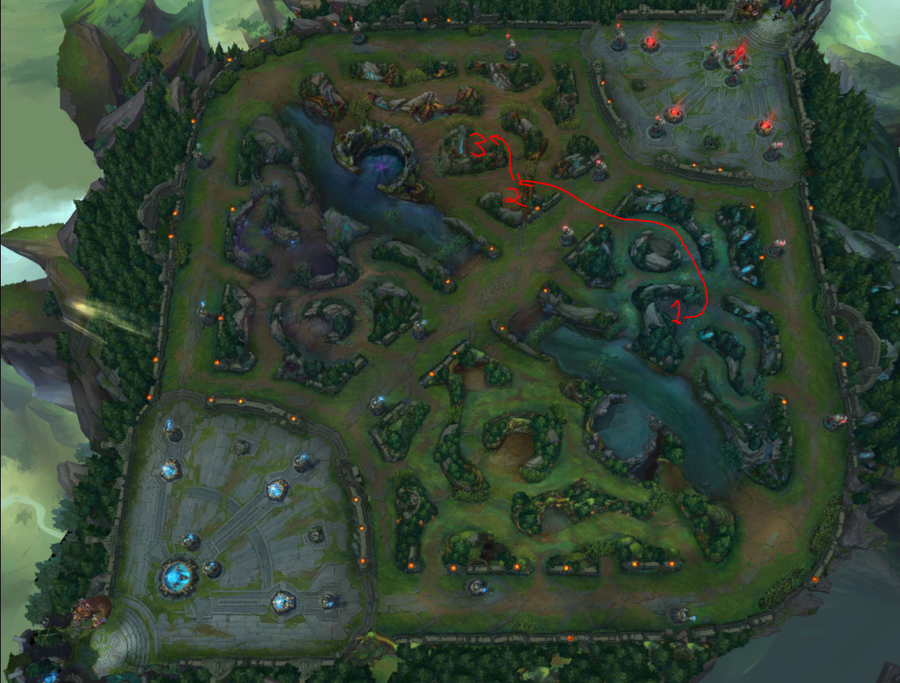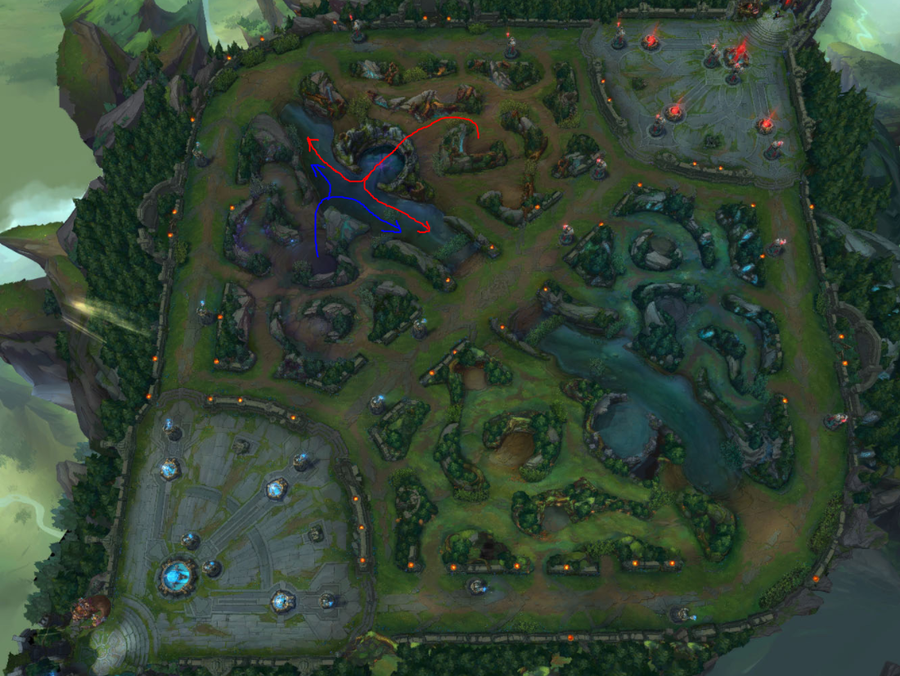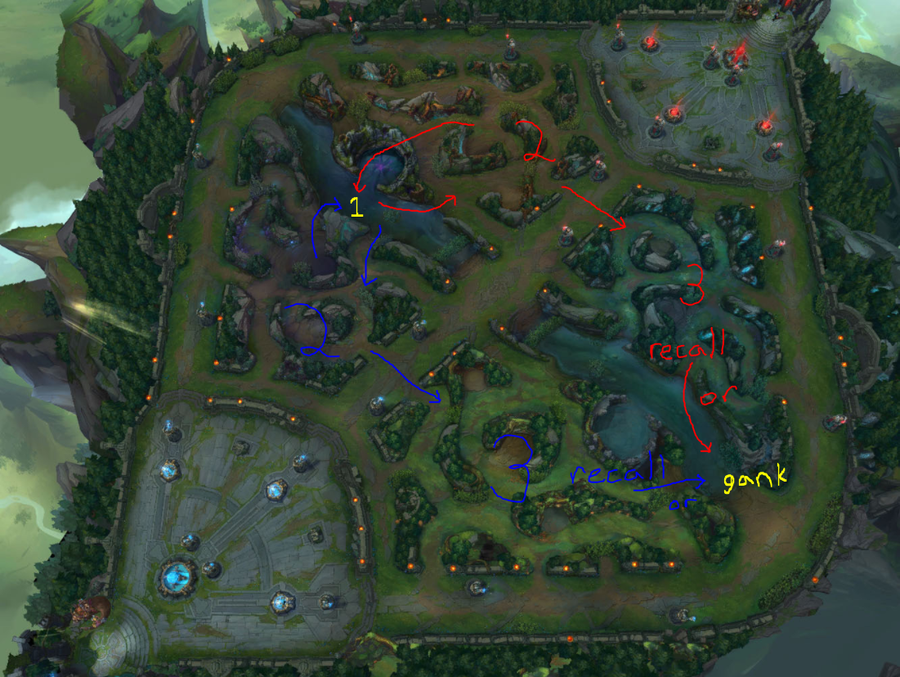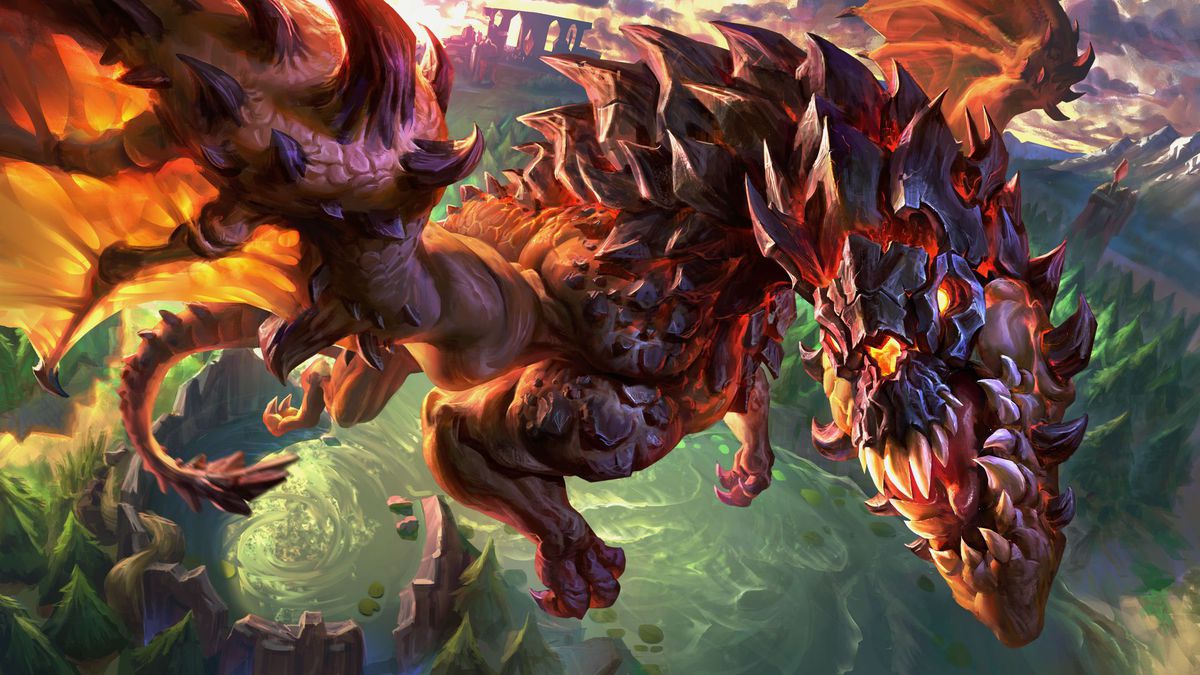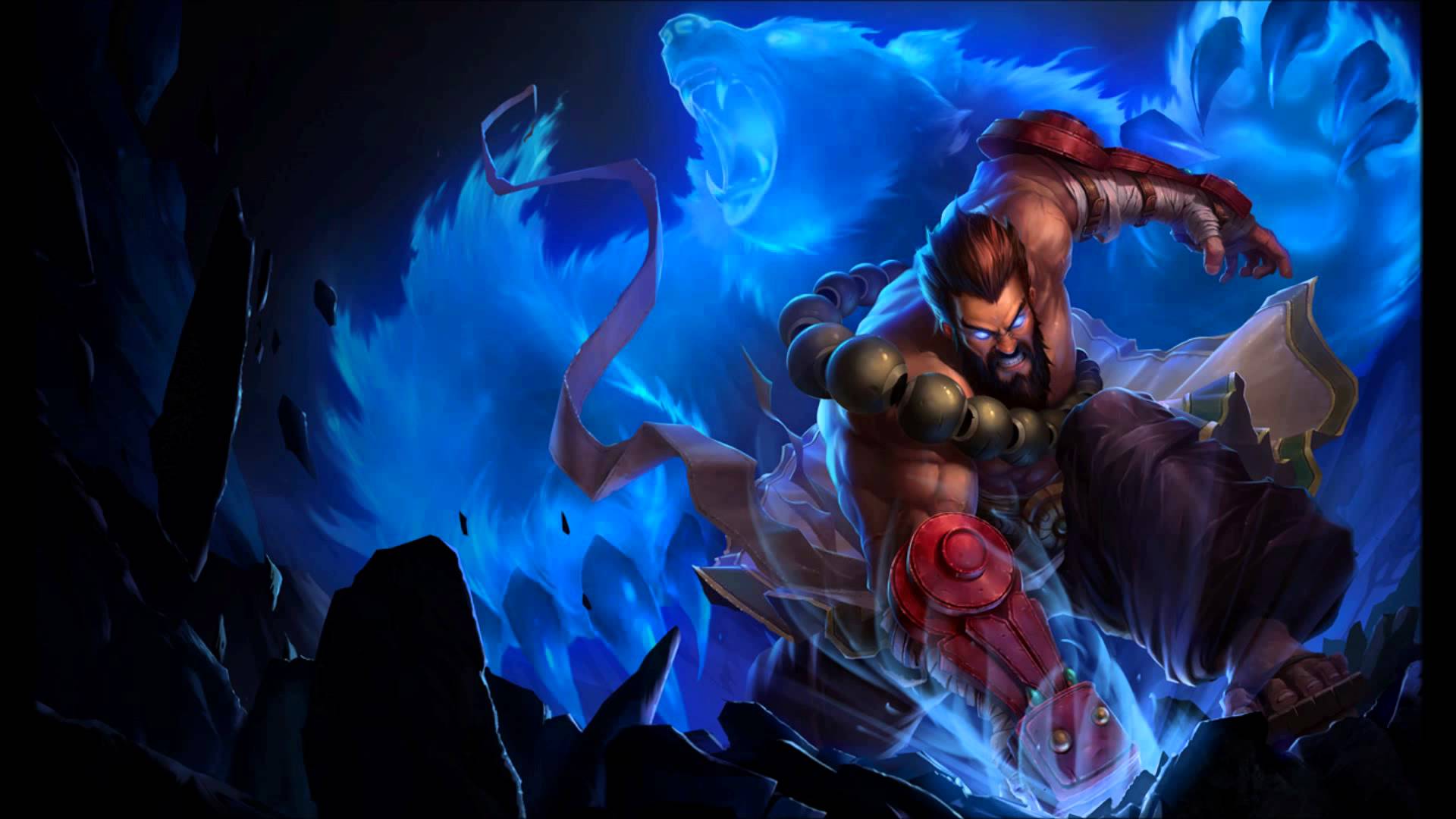
The full guide to play in jungle through the season 8 in League of Legends
Understanding the Summoner’s Rift jungle is one of the most invaluable tools that any League of Legends player can have in their arsenal. Not only is it useful for aspiring jungle mains, but it’s also crucial for every other role to know as well.
If you can predict the enemy jungler’s movements, you can avoid game-changing ganks that end in tragedy. Or better yet, and for more practiced players, you can even set up traps and rotations designed to catch the enemy jungler at specific camps to turn the tide in your team’s favor.
Likewise, as a jungler, moving around the map and clearing camps in a specific way allows you to maximize how quickly and how often you can gank, and oftentimes, the jungler is responsible for controlling the pace of the game and setting up the big plays. The jungler with the most impact on their team is the jungler that wins the most.
The first step to all of this is understanding proper pathing and routing through the jungle.
What is jungle pathing?
[KGVID]https://en.esports-me.com/wp-content/uploads/2018/01/jungler-video-1-1.mp4[/KGVID]Jungle pathing, or jungle routing, simply means the paths that a jungler chooses to take. It dictates the order in which they clear camps and the directions they take to get to those camps.
There are numerous factors that weigh into why a jungler goes where they go, Likewise, if the enemy knows where you’ll be and attempts to thwart you when you try to take a camp as a jungler, your best defense will be map awareness. It’s important to know exactly when an enemy laner goes missing and how long it’s been since you’ve had vision of them, and respecting your own strength in fights.
In this guide to jungle pathing and routing, we’ll dive into some of the more common paths shared by most of the game’s junglers at the start of each game, followed by a deeper look into special paths used by other specific champions that have kits that allow them to do so.
The common paths
Stage one: Blue side standard path A
When you start on the blue side as a standard jungler, like Jarvan IV, Vi, Sejuani, or Warwick, you’ll want to start with your Red Brambleback, otherwise known as the “red buff.” This will instantly put you at level two, and the health regen provided by the buff will make clearing the rest of your jungle slightly easier. The next camp is determined by which champion you’re playing. Next, you’ll move onto your Blue Sentinel, or the “blue buff.” After you finish your second buff, you’ve now completed the first stage of your jungle path.
Stage one: Blue side standard path B
On the other hand, you may be playing a champion with much stronger single-target damage than AoE, like Kha’Zix, Jarvan IV, Vi, or Warwick. In that case, you should have taken the Hunter’s Machete item over the Talisman, and that will boost your single-target camp clear by providing you with lifesteal toward jungle monsters.
With these champions, you still start with the Red Brambleback, but you’ll want to skip straight over to your Blue Sentinel, and then finish the first stage of this jungle path by clearing your Gromp. You may also choose to take Gromp before Blue Sentinel. The difference in timing is negligible.
Stage one: Red side standard path A
For the standard paths on the red side, you’ll essentially just do the reverse as you would on the blue side. For instance, if you’re playing a tank or mage jungler , you’ll start with the Blue Sentinel, move across the lane to the Raptors, and then take your red buff.
Stage one: Red side standard path B
Simply start with your Blue Sentinel, move onto your Gromp, and then trot across the lane to your Red Brambleback. This maximizes your damage by pitting you against strictly single-target monsters.
Stage two: Early gank
After finishing the first stage of your standard jungle path, you’ll find yourself in between the mid and top lanes wondering where to go and what to do next. Don’t worry, because there’s really only three simple options. As for laners, the jungler usually begins this stage at around three minutes into the game or slightly before.
Option one: Look for a gank
The first option is to gank a lane. Walk out into the top side river and take a glance at both your top and mid lanes. Is one of your allies pushed up hard enough to make for a safe gank? No? Move onto option two. If they’re pushed back, and the enemy laner is exposed, move in. It’s as simple as that. If you pull off a successful gank, you can go farm your jungle some more, recall, or even gank again. Typically, ganking again won’t work, because the enemy laner will probably ward to prepare for you almost immediately upon returning to lane.
Option two: Kill Scuttle, look for a gank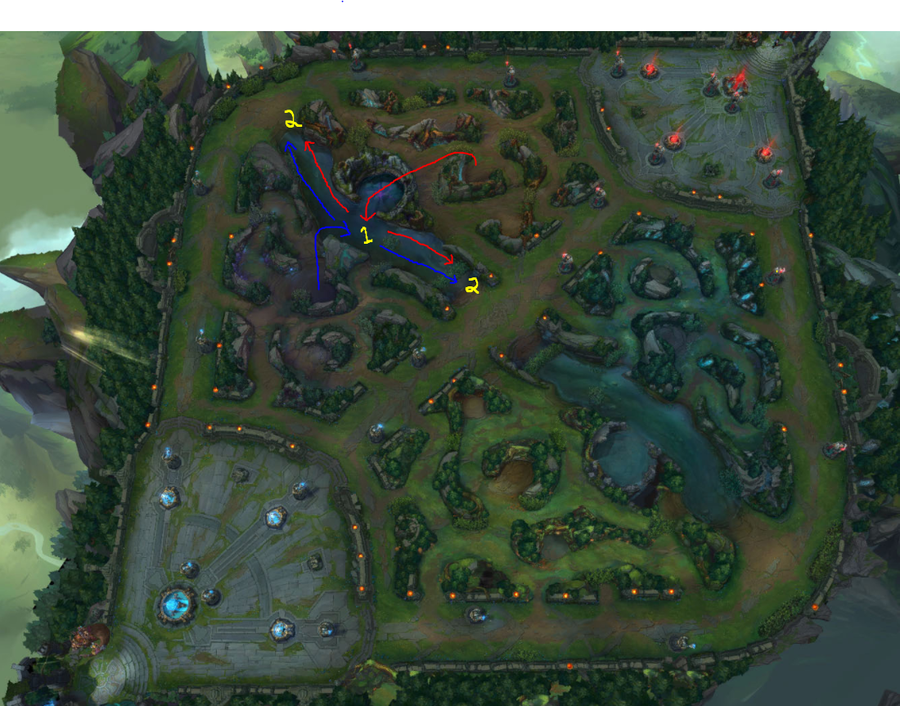
The second option is to clear the Scuttle Crab, and then gank a lane. Taking the time to kill the crab will give your red buff time to regen some health. That, paired with the health return from either your starting jungle item or Smite, if it’s available, should be enough to make you healthy again.
Option three: Full clear
This stage doesn’t often happen, but if you’re still too low health after taking Scuttle Crab or both your top and mid laners pushed insanely hard and are looking very difficult to gank, you do have the option to go back into your jungle and clear the rest of the camps before recalling or attempting your first gank.
The early dragon
There are a few champions that can actually kill the dragon extremely early in the game. Typically, you’ll need to be at least level four, have both buffs still, and have at least one upgrade on your jungle item. With those circumstances met, you can solo kill the dragon as a small number of champions.
These champions are Warwick, Shyvana, Kindred, Nunu, Udyr, Fiddlesticks, and Olaf. so if you really want to be a pain in the side of the enemy team, get ready to clear objectives insanely early. Unfortunately, this usually only works once, because the enemy team will wise up after your first sneaky dragon.
This guide must be enough for any player want starting to play in the jungle and understanding the play stages and clearing the camps in the jungle.

